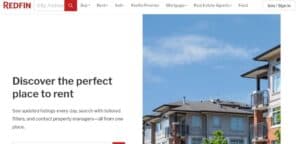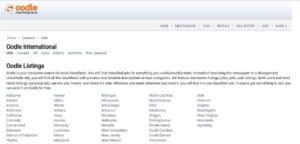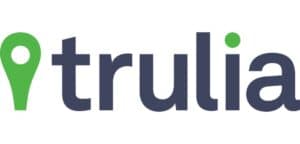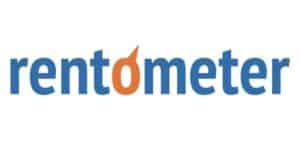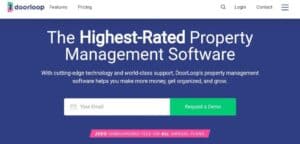
by Inez Kim March 7, 2025
Choosing the right rental listing site can make all the difference in finding reliable tenants quickly and managing your property with ease. With so many platforms available—each offering different features, pricing, and audience reach—it’s important to pick one that aligns with your goals. Some sites offer maximum exposure, while others provide advanced tools for screening tenants, collecting rent, or analyzing market trends. Whether you’re a landlord looking for a free listing option or a property manager in need of an all-in-one solution, this guide breaks down the best rental listing platforms to help you make an informed decision.
How to Choose the Right Rental Listing Site
Finding the right rental listing site is crucial for attracting quality tenants quickly and efficiently. With numerous platforms available, landlords must consider several factors to determine which one best suits their needs. Key aspects such as cost, features, audience reach, ease of use, and reputation all play a role in making an informed decision. Below, we break down these essential factors to help you choose the best site for listing your rental property.
Consider the Cost
The cost of listing your rental can vary significantly across platforms. Some websites, like Oodle and Rentdigs, offer free listings, which are ideal for landlords on a budget. However, these sites may lack advanced features such as tenant screening and lease management. On the other hand, paid platforms like Zillow and Rentals.com charge listing fees, typically offering premium exposure, tenant verification, and marketing tools.
Some platforms operate on a subscription model, like Rentometer, which provides valuable rental pricing insights but may not be necessary for every landlord. If you manage multiple properties, investing in an all-in-one property management platform like DoorLoop may be more cost-effective in the long run. Evaluating what you get for the price will help you determine the best platform that fits your budget and rental goals.
Look for Must-Have Features
Not all rental listing sites offer the same tools, so it’s important to choose one with features that align with your needs. If tenant screening is a priority, platforms like Zillow and Rentals.com provide background and credit checks to ensure reliability. For landlords who want a seamless rent collection process, Zillow and DoorLoop offer integrated online payment options.
Listings with high-quality photos and virtual tours tend to attract more interest, a feature commonly found on Zillow, Apartments.com, and Rentals.com. Additionally, some platforms, such as DoorLoop and Rentdigs, offer syndication services, meaning your listing gets automatically posted to multiple rental sites. For those who need lease management and maintenance tracking, DoorLoop provides a full-service solution. Selecting a platform with the right tools can save time, reduce stress, and make the rental process much more efficient.
Think About Audience Reach
A rental listing is only effective if the right people see it. Websites like Zillow, Trulia, and Apartments.com have a broad reach, making them ideal for landlords in high-demand areas or major cities. If you’re renting out a single-family home or targeting suburban markets, platforms like Homes.com and Rentals.com might be a better fit. Free sites like Oodle and Rentdigs can be useful for price-conscious renters, but they may also attract a higher volume of unqualified leads.
Some platforms, such as DoorLoop and Rentdigs, allow landlords to syndicate their listings across multiple websites, increasing visibility. In competitive rental markets, platforms that offer premium listing placements, such as Zillow’s paid listings or Apartment Guide’s advertising services, can help attract more applicants. Choosing a site with the right audience reach ensures that your property is seen by the right tenants.
Choose an Easy-to-Use Platform
A rental listing platform should be intuitive and simple to navigate for both landlords and tenants. A clean and organized dashboard can help landlords manage multiple listings, track applications, and communicate with prospective renters efficiently. Sites like Zillow, Trulia, and Apartments.com are known for their user-friendly interfaces, making it easy to list properties, update information, and interact with applicants.
Additionally, mobile compatibility is crucial for landlords who want to manage their listings on the go. Some older classified sites can be more difficult to use, leading to frustration for both landlords and potential tenants. A platform with an intuitive design and smooth functionality will make the listing and rental process significantly easier.
Check Reviews & Reputation
Before committing to a rental listing site, it’s wise to research its reputation and read reviews from other landlords. Platforms like Trustpilot, Google Reviews, and Reddit provide insights into user experiences, highlighting common issues such as poor customer service, low-quality leads, or scam risks.
Established sites like Zillow, Trulia, and Apartments.com generally have strong reputations and a track record of success. Free platforms like Oodle can sometimes attract spam messages, while subscription-based services like Rentometer have been criticized for providing inaccurate pricing data. Evaluating user feedback can help you avoid unreliable platforms and choose one with a strong reputation for delivering results.
Top Rental Listing Sites for Landlords and Renters
Finding the right platform to list your rental property can significantly impact the quality of tenants you attract and the ease of property management. Some websites focus on high traffic and broad reach, while others specialize in advanced tools for screening, rent collection, and tenant communication. Here’s an in-depth look at the best rental listing sites, what they offer, and how they compare.
1. Zillow Rentals
Zillow is one of the largest real estate platforms, covering both home buying and renting. With over 135 million property listings, it offers unparalleled exposure for landlords. The Zillow Rental Manager tool streamlines the process of listing properties, screening tenants, and collecting rent online.
Features:
Zillow Rental Manager: Easily manage multiple properties, post listings, and screen tenants.
3D Virtual Tours: Enhance your listings with high-quality virtual walkthroughs.
Tenant Screening: Built-in background and credit checks.
Online Rent Collection: Tenants can pay rent online, making transactions seamless.
Mobile App: Upload, edit, and manage listings on the go.
Pros:
Massive audience ensures high visibility.
Advanced tools simplify tenant screening and rent collection.
3D tours improve engagement with potential renters.
Cons:
Limited ability to categorize listings by neighborhood.
Only the first listing is free; additional ones cost $9.99 per week.
Some landlords find the financial tools lacking for deposits and extra fees.
2. Rentals.com
Rentals.com is a platform under RentPath that caters specifically to single-family homes, townhouses, condos, and rent-to-own properties. It is particularly popular among first-time renters and millennials.
Features:
Prioritized Listings: Older listings maintain visibility rather than being pushed down by new ones.
Extensive Search Filters: Helps tenants find rentals based on their exact preferences.
Unlimited Applications: Landlords can receive and review applications at no extra cost.
Video Tours: Showcase properties with detailed video walkthroughs.
Pros:
Helps landlords maintain listing visibility over time.
Attracts a large pool of renters, especially younger demographics.
Free and unlimited applications for serious renters.
Cons:
Some landlords report slow updates and site glitches.
Pricing ranges from $49.99 to $84.99 per month, which can be expensive.
Some users find lead quality lower than expected.
3. Oodle
Oodle is a classified ads platform, similar to Craigslist or Facebook Marketplace, where landlords can post rental listings for free. It’s one of the biggest classified listing sites on the web.
Features:
Free Listings: Post unlimited rental properties at no cost.
Wide Exposure: A vast user base increases chances of finding tenants.
Search Filters: Allows users to refine searches, including filtering by email.
Pros:
Completely free to use.
Quick and easy to list properties.
Large audience reach.
Cons:
High risk of scam messages from unverified users.
No built-in tenant screening or rental management tools.
4. Trulia
Trulia is a subsidiary of Zillow that provides in-depth neighborhood insights to help renters make informed decisions. The platform is widely used for apartment and home rentals and integrates with Zillow’s listings.
Features:
Crime Maps & Neighborhood Insights: Helps renters evaluate safety and amenities.
Local School Ratings: Useful for families looking for homes in good school districts.
User Reviews: Renters can read and leave reviews about neighborhoods.
Pros:
Ideal for renters looking for detailed neighborhood information.
Well-integrated with Zillow for maximum exposure.
Helps landlords attract informed tenants.
Cons:
Some landlords and renters report encountering scams.
Does not offer much beyond what Zillow provides.
5. Rentometer
Unlike typical rental listing sites, Rentometer is a data-driven platform that helps landlords set competitive rental prices based on real market data.
Features:
Rent Comparison Tools: Analyze rental prices in any location.
Market Trends & Analytics: See how rental prices change over time.
Property Type Filters: Compare prices based on home size and location.
Pros:
Helps landlords set the right rental price using data-driven insights.
Provides detailed pricing metrics (average, median, percentiles).
Great for real estate investors analyzing rental markets.
Cons:
Some users find the pricing estimates inaccurate or outdated.
Paid subscriptions required for full access ($29/month – $199/year).
6. Apartment Guide
Apartment Guide is a well-known platform specializing in big-city rentals like apartments, townhomes, and condos.
Features:
High-Quality Photos & Descriptions: Listings come with detailed images and specs.
Advanced Filters: Helps tenants find properties based on location, price, and amenities.
Save Favorite Listings: Renters can bookmark properties they like.
Pros:
Free and easy-to-use interface.
Offers good exposure for landlords renting out city apartments.
Supports leasing single-family homes and townhouses.
Cons:
Some listings have misleading photos.
Less effective for rental properties outside major cities.
7. Homes.com
Homes.com is one of the largest property search engines, mainly focusing on single-family homes.
Features:
Concierge Real Estate Marketing: Uses AI-driven advertising for property promotion.
High-Traffic Site: Ensures strong listing visibility.
Pros:
Excellent for single-family home rentals.
High web traffic attracts more renters.
Cons:
You need to pay for leads instead of listing for free.
Customer service can be inconsistent.
8. Rentdigs
Rentdigs is a landlord-friendly platform that provides free listings and automatic syndication to other rental sites.
Features:
Free Listings: No charge for adding properties.
Syndication: Automatically posts to MyNewPlace, Oodle, and Trovit.
Tenant Screening Tools: Custom screening questions for better tenant selection.
Pros:
Completely free to use.
Good SEO ranking, making listings visible on Google.
Cons:
Less traffic compared to Zillow or Apartments.com.
9. DoorLoop
DoorLoop is a comprehensive property management software that allows landlords to list rentals, collect rent, and manage maintenance requests all in one platform.
Features:
Automated Listings: Syndicates to Zillow, Trulia, and Apartments.com.
Online Rent Collection: Tenants can pay digitally.
Tenant Communication & Maintenance Tracking.
Pros:
- Full property management system.
- Helps keep properties occupied with automation.
Cons:
- Transaction fees (3.75%) on rent payments.
Conclusion
The right rental listing site depends on your specific needs as a landlord. If you’re looking for maximum exposure, platforms like Zillow and Apartments.com attract a large audience. For landlords who want free listing options, Oodle and Rentdigs provide cost-effective alternatives.
If you need help setting competitive rental prices, Rentometer offers market insights, while full-service property management tools like DoorLoop streamline the entire rental process. By carefully considering factors like cost, features, audience reach, and ease of use, you can choose the best platform to find quality tenants and simplify your rental management.

